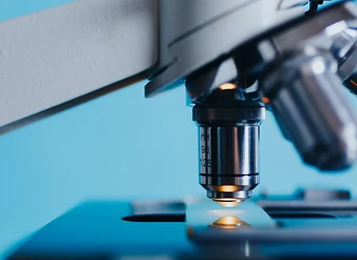
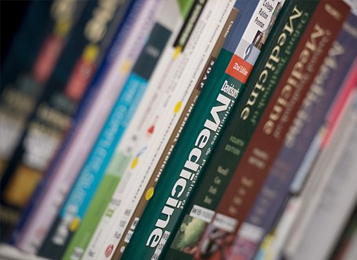
- Application Article
- Download
Hooke College

- About Us
- Team
- R & D and production
- Join Us
- Contact Us
- Qualification honor



Cells are the basic units of life. Each cell of a multicellular organism carries the same genetic information, but the phenotype of each cell and the role it plays in life activities are actually different. Prior to cell group as the object of study way, often obscures the uniqueness of each cell, single-cell level research to panoramically reveal the nature of life activity, for the study of disease mechanism and diagnosis of disease prevention and so on has the vital significance, however, from complex cells gain goal single-celled environment is the basis of the study of single cell, is also one of the most important step. At present, the sorting methods involved in the research group include laser induced forward transfer catapult sorting, laser microcutting sorting, optical tweezers sorting, magnetic bead sorting.
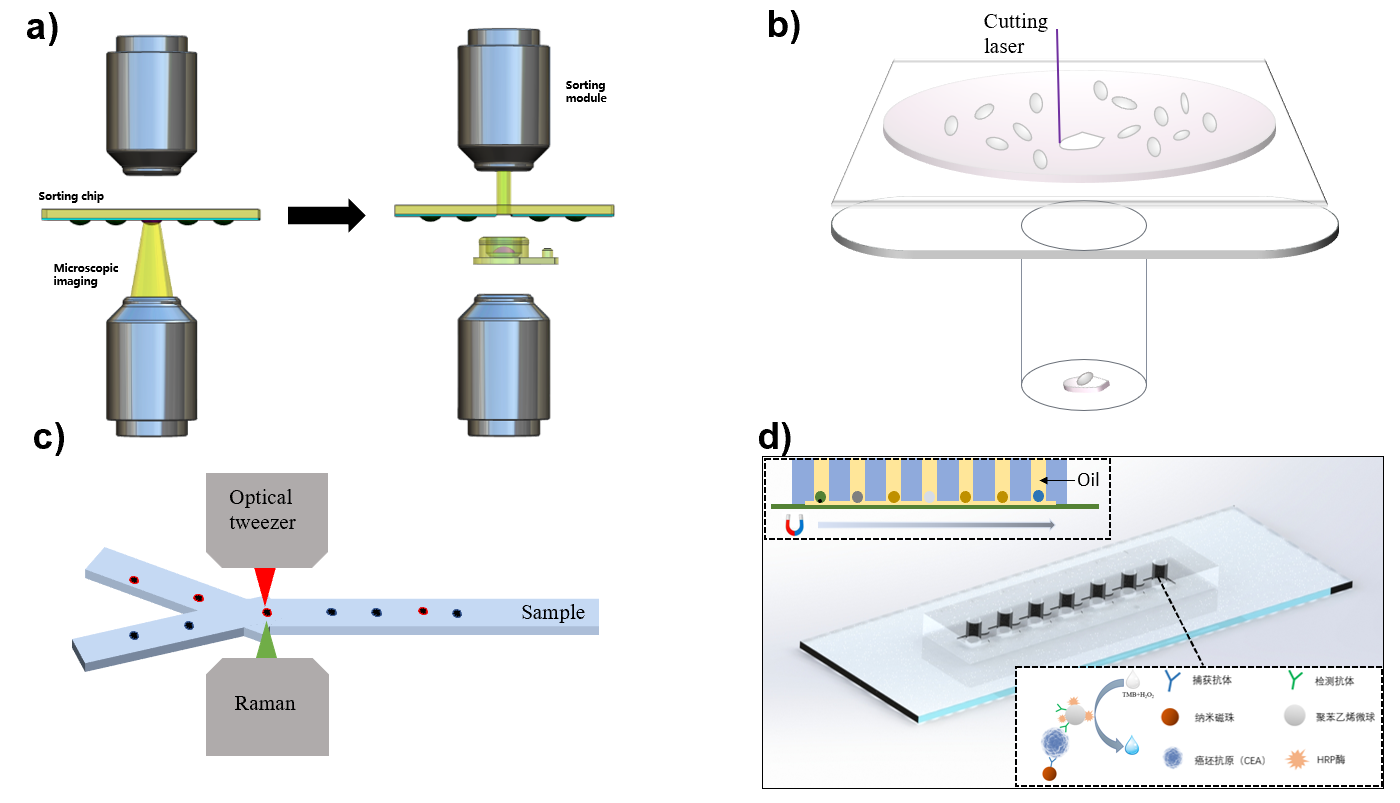
Figure 1. (a) laser-induced forward transfer ejection sorting, (b) laser microcutting sorting, (c) optical tweezers sorting, (D) magnetic bead sorting.
Laser Microdissection is performed in accordance with the principle of interaction between light and material. The specimen is applied to the thin film material, the target cell is identified and selected under the microscope, then the Laser is focused on the film, and the incision is performed around the cell. But there are three ways to get the cut cells. As shown in Figure 2, the cut target cells were collected into the receiving device under the action of viscosity, gravity, and another laser ejection. Laser microcutting is suitable for single cell sorting of solid tissue samples.
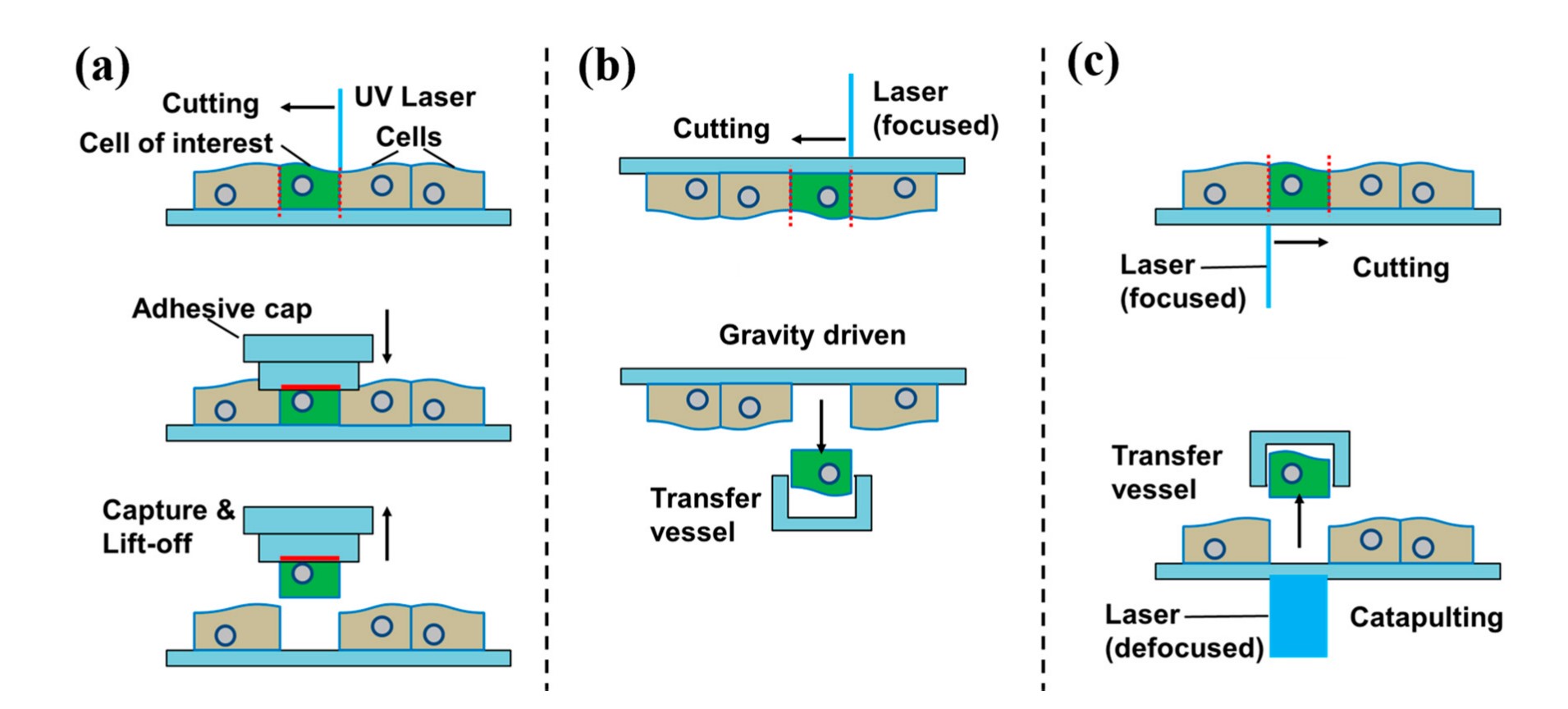
Figure 2. (a) viscous material contact, (b) gravitational force, and (c) the force of another laser beam
Compared with mechanical tweezers, Optical Tweezer is a non-mechanical contact way to complete the clamping, manipulation, capture and fixation of small objects. The combination of optical tweezers and microfluidic technology is widely used in cell sorting and other fields. The selection of laser with appropriate wavelength can make the thermal or chemical effects of optical tweezers very weak, so as to almost not cause any damage to cells. Optical tweezers technology can be combined with Raman spectroscopy technology to carry out Raman-activated microbial cell sorting (RACS), and Raman detection is performed after optical tweezers capture cells.
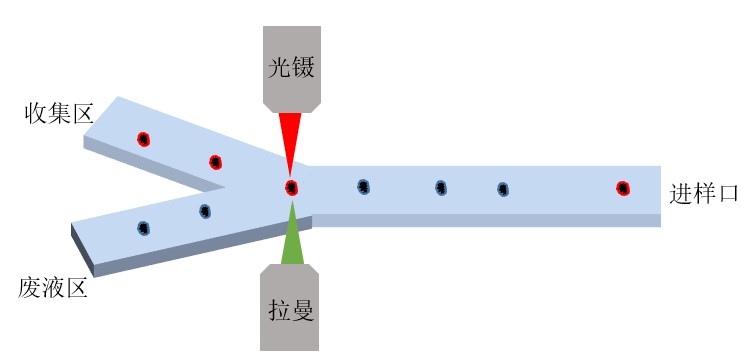
Magnetic-activated Cell Sorting involves coupling of magnetic beads with specific functional groups and specific antibodies on the surface to capture target cells through specific antibodies, and then control the Sorting of magnetic beads through the action of external magnetic field. Compared with flow cytometry, magnetic bead sorting focuses on rough sorting of large samples as a whole, with low operation cost, and is mainly used in various scientific research experiments. In recent years, the combination of magnetic bead sorting technology and microfluidic technology has greatly reduced the cost of cell sorting and avoided the experimental risk of contamination by foreign impurities under the condition of microliter sample volume, which has brought a brand new development for the detection technology of all kinds of cells or micro-particles.
Laser induced forward transfer (LIFT) technology is based on the principle of interaction between light and matter. When a beam of light shines on a metal or polymer film through a transparent substrate, part of the light will be absorbed by the film and converted into internal energy, leading to temperature rise and expansion and deformation. Or even liquefaction or vaporization, resulting in the transfer of materials.
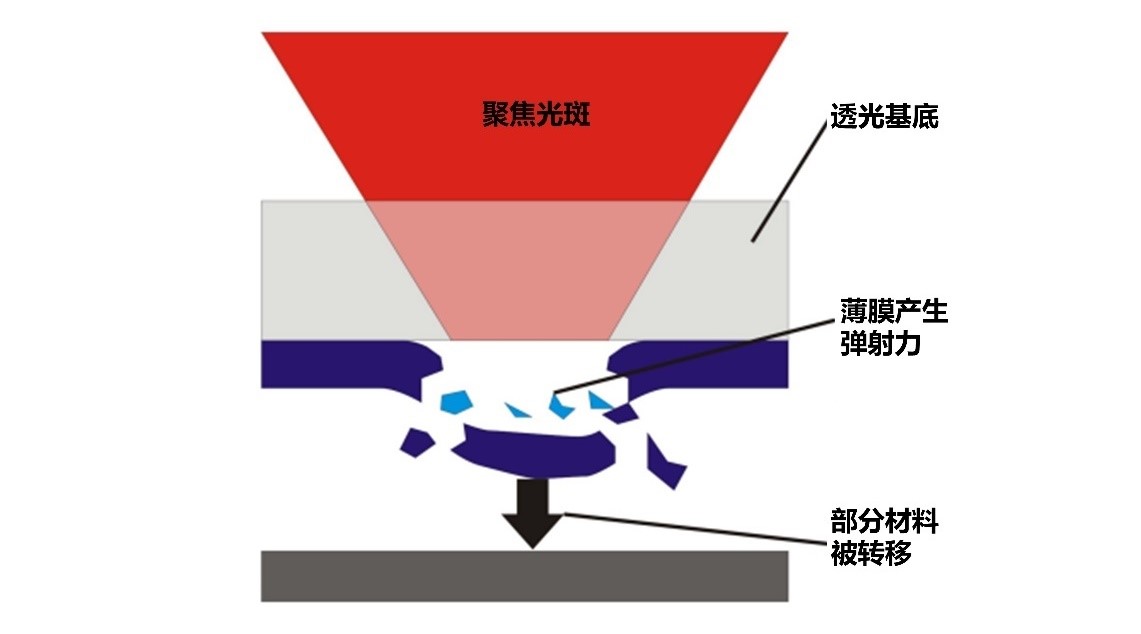
LIFT technology is widely applied in biological field, compared with the ink-jet printing and extrusion type print (a) (b), print (c) because of its LIFT without the print heads, the viscosity range larger materials can be printed, prevent the occurrence of the nozzle clogging, at the same time is also very good solution to print cells in the process of cross contamination and shear damage problem.

Figure (a) inkjet bioprinting, (b) extrusion bioprinting, (c) laser-assisted bioprinting.
Using LIFT technology for microbial ejection sorting, our group achieved a "what you see is what you get" single-cell sorting mode for microorganisms, which can be sorted at the single-cell level based on morphological characteristics, fluorescence, Raman and other signals, and successfully developed commercial products.
In addition, dilution method, microoperation and flow cytometry are commonly used in laboratory or commercial sorting methods. As shown in the figure, the technical characteristics of all the above cell sorting methods are listed as follows.
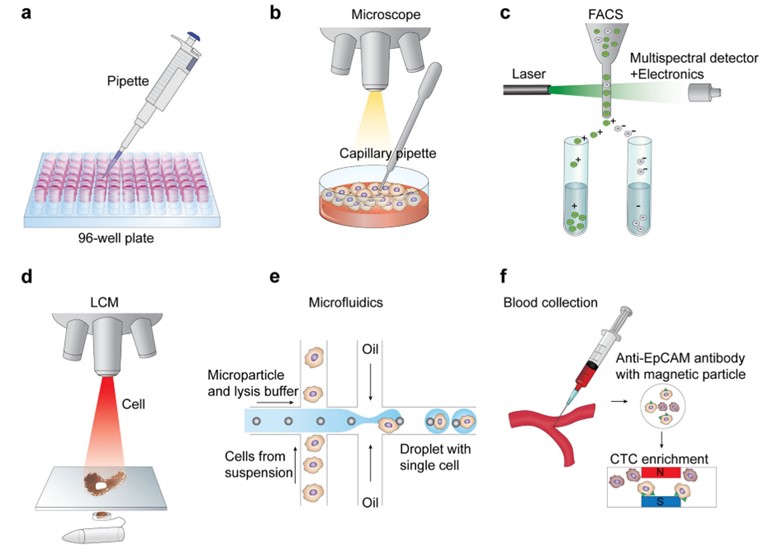
The characteristics of various cell sorting methods are presented.
Methods of cell sorting | Damage to cells | Visual | To obtain single cells | Automation, flux |
Dilution method | Milder | NO | Low probability | Manual, low flux |
Micromanipulation | Secondary | YES | YES | Manual, low flux |
Laser microcutting | General damage | YES | YES | Automatic, low flux |
Optical tweezers sorting | Secondary | YES | NO | Automatic, low flux |
Optical tweezers sorting flow cytometry sorting | General damage | NO | YES | Automatic, high flux |
Microfluidic sorting | Secondary | YES | NO | Automatic, flux medium |
Magnetic cell sorting | Secondary | NO | NO | Automatic, high flux |
Different pattern beam to LIFT ejection microbial accuracy and damage, the influence of the LIFT has been widely used in the field of single cell sorting, but the technology is still faced with sorting accuracy and cell damage problems, mainly by controlling the laser energy to reduce the cell damage, in the process of sorting through produce different patterns of beams to improve the accuracy of the sorting and receiving.
Spatial transcriptome technology aims to quantitatively measure the gene expression of cells and provide information about the specific location of cells in tissue space. The specific spatial location of cells was obtained by laser microcutting, and the sorted cells were constructed into different sequencing libraries. The gene expression information was obtained by high-throughput transcriptome sequencing, and the spatial location information and gene expression data of cells were also obtained.
Magnetic bead separation combined with microfluidic technology and immunomagnetic separation technology can realize automatic and rapid detection of CEA on chip, which can be used in field detection applications. Magnetic bead sorting is to use the surface coated with a specific functional group of magnetic beads and specific antibody mutual coupling, through the specific antibody to capture the target cells, and then through the effect of external magnetic field, control the magnetic beads for sorting operation. Compared with flow cytometry, magnetic bead sorting focuses on rough sorting of large samples as a whole, with low operation cost, and is mainly used in various scientific research experiments. In recent years, the combination of magnetic bead sorting technology and microfluidic technology has greatly reduced the cost of cell sorting and avoided the experimental risk of contamination by foreign impurities under the condition of microliter sample volume, which has brought a brand new development for the detection technology of all kinds of cells or micro-particles.
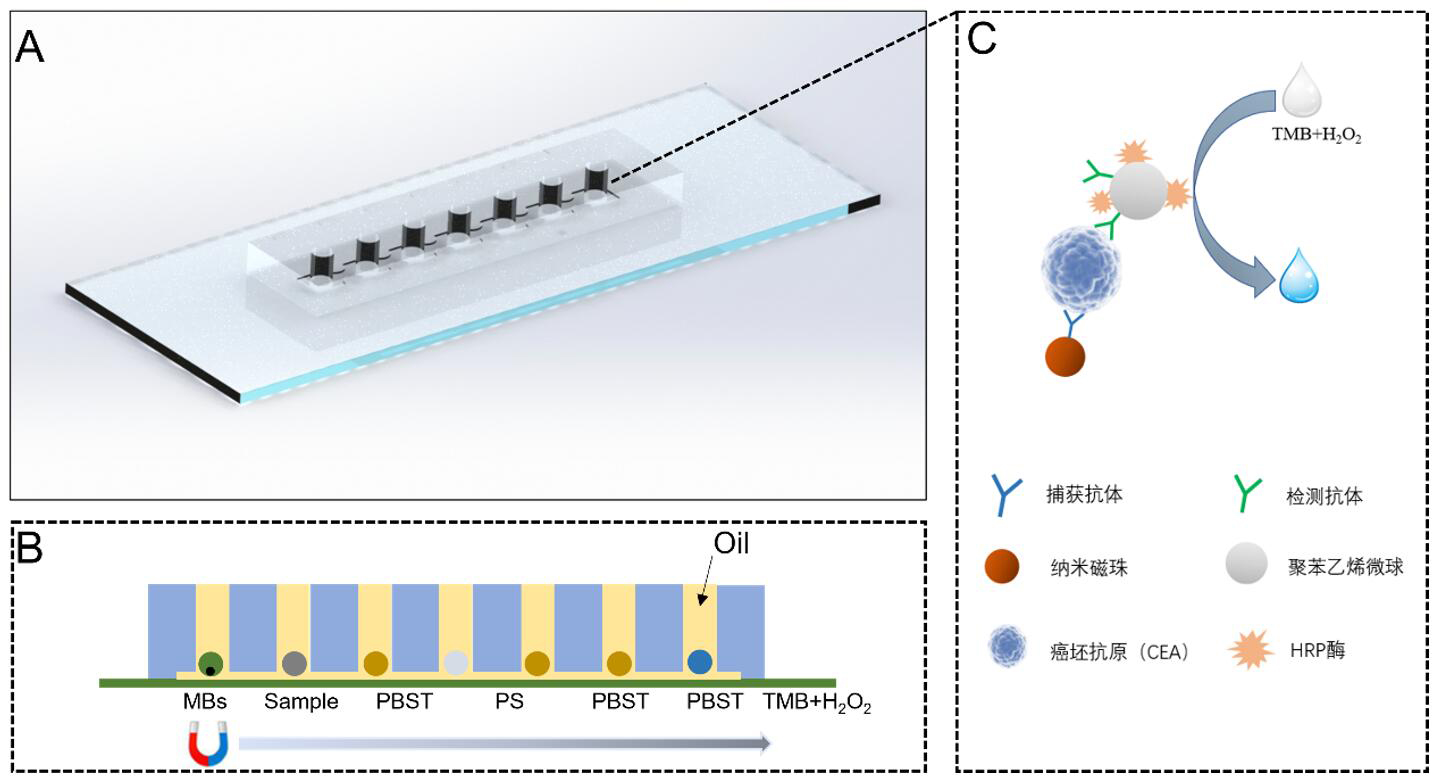
Laser induced forward transfer technology is widely used in the printing of electronic components, micro and nano manufacturing of three-dimensional structures, and biological printing of cells and other industrial and scientific research fields because of its ability to transfer small matter. This topic mainly focuses on the interaction between NS pulse laser and metal aluminum film, and carries out research on laser-induced forward transfer technology for single cell ejection sorting of microorganisms. The main research contents include: (1) through the use of small energy ns pulse laser applied to aluminum film, using the thermal deformation of aluminum film the ejection and receiving of microbial cells, improve the efficiency of ejection microbial receiving, and by using the finite element simulation method to simulate the laser temperature distribution and thermal deformation and the function of the aluminium film, by confocal laser scanning, SEM, AFM, high-speed imaging methods were characterized. (2) Aiming at the problem that the high temperature in the ejection process will cause thermal damage to the microbial cells, which leads to the inability of the ejection cells to be cultured, the ejection chip with thermal insulation structure is developed to isolate the heat damage to the cells in the ejection process and realize the culture of single microbial cells after ejection. (3) The laser beam was adjusted into multiple spots by beam shaping, and multiple ejection spots were simultaneously ejected to realize ejection separation of microorganisms with complex shapes that are difficult to be sorted by traditional methods. The application range of LIFT technology for ejection sorting of microbial cells was extended.
Optofluidics is an emerging interdisciplinary field, which combines the advantages of optical tweezers and microfluidic technologies. Optical tweezers technology won the Nobel Prize for physics in 2018, optical tweezers technology has developed rapidly in recent years, some famous international journals published a large number of articles in this field, optical tweezers technology in cell biology, molecular biology, and physics have good application, especially in cell biology, optical tweezers with its PN, It is one of the best ways to manipulate microorganisms precisely without contact. Microfluidic technology originated from the concept of Lab on a chip, which integrates the means of sample preparation, reaction, separation and detection involved in conventional experiments on a tiny chip to complete, and has broad application prospects in cell sorting, drug screening and chemical detection. Microfluidic technology automates the movement, merging and splitting of discrete microdroplets of microliter to nanoliter size. The optical fluidic technology combines the characteristics of high precision sorting of optical tweezers with the characteristics of high throughput automation of microfluidic technology, which has a huge and broad application prospect in single cell sorting.
This project mainly studies the fabrication of microporous membrane on metal coated slides, and single cell separation combined with LIFT. Auxiliary LIFT microporous membrane separation and the original LIFT sorting method to conduct a comprehensive comparison, the results show that it is better than the existing LIFT in multiple scales method, which greatly improve the efficiency of single cell capture, reduce the cell damage, cell activity, the survival rate and increase the cell culture, in order to solve the current problem of single cell isolation and culture provides a unique way. This approach paves the way for exploring the human microbiome for future treatments for a variety of diseases.

+86-431-81077008
+86-571-86972756

Building 3, Photoelectric Information Industrial Park, No.7691 Ziyou Road, Changchun, Jilin, P.R.C
F2006, 2nd Floor,South Building, No. 368 Liuhe Road, Binjiang District, Hangzhou, Zhejiang,P.R.C

sales@hooke-instruments.com

COPYRIGHT©2022 HOOKE INSTRUMENTS LTD.ALL RIGHTS RESERVED 吉ICP备18001354号-1